Invisalign Clear Aligners - Western Massachusetts
Straight Smiles without the Metal
When caring for teenagers and adults, it’s common for aesthetics to be a top concern here at Treehouse Orthodontics. While traditional braces are extremely good at straightening teeth, many patients simply can’t accept the idea of wearing dark-colored brackets and wires for months (or even years) on end – and this is completely understandable! That’s why we have alternative treatment plans waiting in the wings, including Invisalign® Clear Aligners. As the name implies, Invisalign is subtle, convenient, and ideal for patients who want to maintain a natural, confident appearance throughout their treatment. Please contact us today if you’d like to learn more about Invisalign in Western Massachusetts or schedule an appointment.
Why Choose Treehouse Orthodontics for Invisalign Clear Aligners?
- Diamond Provider For Invisalign®
- Clear, Removable Components – No “Metal Mouth” Required
- Eight Convenient Orthodontic Office Locations
How Invisalign Works

Invisalign differs from traditional metal braces because no brackets or wires are necessary. Instead, you'll wear a series of clear aligners over your teeth for at least 22 hours per day. Each aligner applies gentle pressure to specific teeth to move them in small increments. You'll change your aligners every 1-2 weeks as instructed by your dentist. You'll need to check in with your dentist every few weeks to monitor your treatment’s progression. Every case differs, but most patients are finished with their aligners in 12 to 18 months. You'll require a retainer to preserve your results. We offer many discreet options.
Invisalign Teen
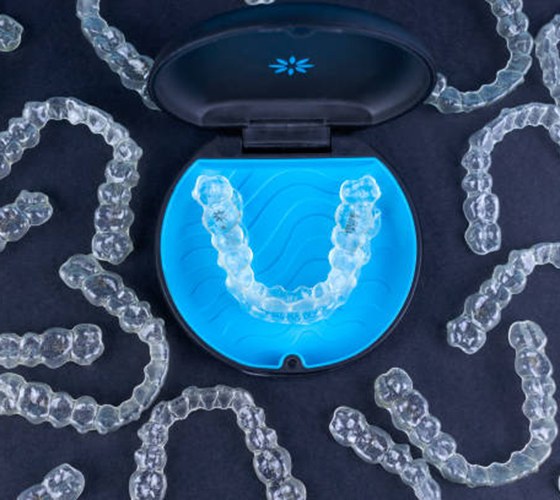
Invisalign isn't just for adults. It's often the preferred orthodontic treatment among teenagers, too. Fitting in as a teen can be challenging. Adding the noticeability of brackets and wires can cause teenagers to feel even more anxious about their appearance. Invisalign provides a discreet solution to improve their alignment and bite, so they can smile confidently while on their journey to straight teeth.
How is Invisalign Teen Different?
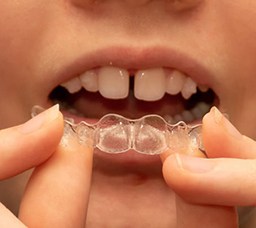
For the most part, Invisalign for teens is no different from clear aligners for adults. The same process is used to fabricate a series of aligners, which your child will wear over their teeth for at least 22 hours per day. They'll switch to the next set every 1 to 2 weeks, as instructed by their orthodontist. The main difference with Invisalign for teens is that the aligners feature blue indicator dots. Let's face it, teenagers can be forgetful. The blue dots are a reminder for your child to change their aligners. This will help keep their treatment on track.
Is Invisalign Right for Your Teen?
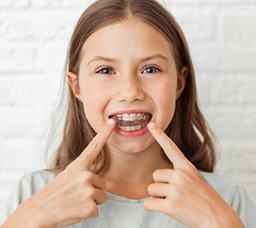
Invisalign is effective at fixing many alignment and bite problems, but it's not right for all teenagers. They'll require an initial consultation to ensure clear aligners can correct their misalignment. Teen candidates for Invisalign must show responsibility because they must commit to following their treatment plan. If they are unlikely to wear their aligners enough or have poor oral hygiene habits, braces might be a better option.
The Benefits of Invisalign Teen
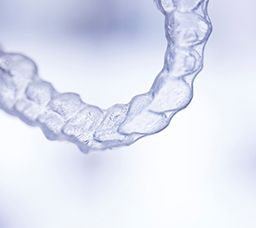
Invisalign offers many great advantages over traditional metal braces, especially for teenagers. Your teen can benefit from:
- Discrete: Invisalign is virtually undetectable when worn over teeth. Your teen won't have any anxiety about unwanted attention brought to their teeth, like with brackets or wires.
- Less Restrictive: Teens don't like giving up their favorite foods or snacks. They won't have to stop eating popcorn or chips when choosing Invisalign. The aligners are removable, so there aren't any dietary restrictions. They will need to take them out when having anything except water.
- Easy Care: brushing and flossing can feel like a chore, especially if your child has to clean around brackets and wires. Their oral hygiene routine will remain virtually unchanged, with the exception of cleaning their aligners.
- Comfortable: Your child won't deal with any irritation to the insides of their cheeks or lips. Each aligner will fit their teeth comfortably. Although their mouth can be tender for a few days after first getting their aligners, or when switching to the next set, the discomfort is temporary and can be managed with an over-the-counter pain reliever.
- No Adjustments: Your teen will enjoy fewer appointments because they don't need to see their orthodontist for adjustments. However, they will still need follow-up appointments every few weeks to allow their orthodontist to monitor the movement of their teeth.
Benefits of Invisalign

Every year, countless patients choose Invisalign over other orthodontic treatment options. Why? Simply because Invisalign offers many benefits that are not available elsewhere! Below, we share just a few of the advantages offered by this effective, non-invasive treatment. If you would like to discover how Invisalign may be able to benefit you personally, we encourage you to attend a consultation with our team. We hope you can become as excited about this service as we are!
More Comfortable Treatment
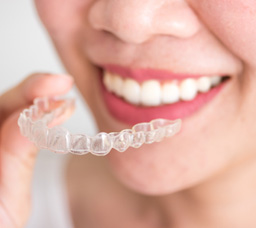
Invisalign aligners are made of a patented type of plastic that has the right balance of flexibility, strength, and thinness. The aligners also have smooth edges that are designed to be gentle on the mouth’s soft oral tissues. Plus, because you switch aligners every 2 weeks, you can expect easier adjustment periods than with traditional braces (which are usually adjusted every 6 – 8 weeks).
Discreet Trays

Even though Invisalign aligners are not totally invisible, they are very discreet. They are not likely to be the first thing that onlookers notice about your appearance. You should be able to smile with confidence whether you are posing for photos, going on dates, or trying to impress clients in the workplace.
Easy Dental Hygiene
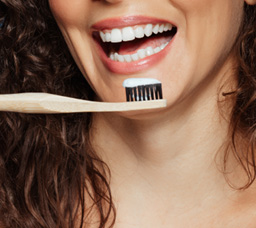
One challenge of traditional braces is that it can be a bit tedious to clean around all the brackets and wires. Invisalign makes oral hygiene easier because the aligner trays are removable. Simply take them out of your mouth and brush and floss as usual! Of course, it is also important to make sure that your trays stay clean. You should rinse them after meals and give them a thorough cleaning each evening with a soft brush and mild soap.
Faster Check-Ins

Invisalign check-in appointments tend to be very brief. In fact, they usually last for just 15 – 30 minutes. In some cases, you might even be able to stop in during your workday and hop right back into your normal routine. (Some appointments last a bit longer, especially if we discover that we need to make some revisions to your treatment plan.)
No Dietary Restrictions

Because Invisalign’s trays are removable, you do not have to worry about how your food choices might affect them. You simply take your aligners out at mealtimes and eat whatever you are craving, even if you want foods that are off-limits with traditional braces. Just be sure to thoroughly clean your mouth before placing your aligners back on your teeth.
Enhanced Confidence

If dental misalignment is adversely affecting the way you feel about your appearance, Invisalign may be able to help. Not only does it have a discreet appearance, but you may notice a difference in your teeth after just a few months! By the time you complete your treatment, you may feel brand-new!
Understanding the Cost of Invisalign

Invisalign is often attributed to an expensive price tag, but you don't have to be rich or famous to benefit from clear aligners. They are an affordable solution to fix a variety of bite and alignment issues. At Treehouse Orthodontics, we strive to keep a straight smile within everyone's budget. We offer the financial solutions you need to invest in the clear choice in orthodontics.
Factors That Affect the Cost of Invisalign

There's no flat fee for Invisalign because many factors affect the cost. Every mouth and situation differs, so there's no way to know how much you'll have to pay without first having a consultation. Although every case is unique, you can expect your estimate to be influenced by:
- Preparatory Treatments: It's not unusual to require a little prep work before getting started with Invisalign, like a dental cleaning, filling, or gum disease therapy.
- Complexity of Case: Major tooth movements will require more aligners to resolve, which will increase the cost.
- Number of Arches: Treating both arches will affect the amount you'll pay, but it's unusual to only require aligners on the top or bottom teeth.
Invisalign vs. Smile Direct Club™: Which Costs More?

Mail-order aligners appear to be a convenient and cost-effective method to correct many bite and alignment issues, but there are major risks involved. From start to finish, you're never under the supervision of a dental professional. As a result, small problems go undetected until it's too late. Not everyone is a candidate for clear aligners, and the smallest miscalculation can cause irreversible damage, including tooth loss. When you visit a dentist, you're investing in experience and peace of mind knowing your smile is in good hands. Your dentist will create a personalized plan to fix your bite and alignment safely.
Does Dental Insurance Cover Invisalign?

Dental plans that include orthodontics can be used to offset the amount you'll pay for Invisalign. Your benefits may cover your consultation, imaging, or printing procedures. Your insurance will pay a set amount for your aligners after meeting your annual deductible. A member of our office will work on your behalf with your dental insurance to maximize any appropriate coverage. They will explain how your benefits are being used and discuss your remaining balance.
Options for Making Invisalign Affordable

Your financial situation should not stand in the way of achieving your best smile. Besides using your dental insurance, we offer many other solutions to keep Invisalign affordable, including:
- Traditional Payments: Our office accepts all traditional payment methods, like cash, personal checks, and credit cards.
- Financing: You can pay any out-of-pocket expenses using a monthly payment plan through a third-party financing company, like CareCredit. You can enjoy little or no interest in financing based on your credit approval.
Living with Invisalign Aligners

If you're ready to achieve a straight smile with clear aligners, you must make a few changes to your lifestyle for about 12 to 18 months. Don't worry, here's what you can expect when living with Invisalign aligners.
Wearing Your Trays

Invisalign is great because clear aligners are removable, unlike metal braces. However, you must have self-accountability to wear your aligners for at least 22 hours per day. You should only take them out when eating and drinking or brushing and flossing your teeth. If you don't wear your aligners long enough, it can add delays to your treatment. You must also switch your aligners on time, which is generally every 1-2 weeks, depending on your treatment plan.
Cleaning Your Aligners

Good oral hygiene is crucial when undergoing any orthodontic treatment. Besides caring for your teeth and gums, your aligners must be cleaned. Plaque can accumulate on them, causing discoloration, odors, and damage over time. Use a soft-bristled toothbrush and a mild hand soap or dishwashing liquid to clean your aligners at least twice daily. Abrasive dental products can scratch them, trapping plaque and food residue that can make them look stained. It can also lead to unpleasant odors.
Eating & Drinking

You won't have any dietary restrictions because you can take Invisalign out. Never eat or drink anything except water while wearing your aligners. Keep them in their storage case when they aren't in your mouth to avoid misplacing them. It will also keep them off germy surfaces. Brush your teeth and rinse your aligners before popping them back in your mouth.
Losing or Damaging a Tray

Accidents can happen. Never wear a damaged aligner. If you break or lose an aligner, contact our office right away. We may instruct you to use the next aligners in your series if it's almost time to swap them out. However, you may require a replacement and will be instructed to wear one from the previous week while you wait.
Routine Check-Ins

You don't have to worry about appointments for adjustments, but you'll still need to come into our office every few weeks for routine check-ins. This allows us to monitor the movement of your teeth to ensure everything progresses as anticipated. We can intervene quickly, should a problem arise.
Who Can Invisalign Help?

Invisalign is a great option for teens and adults looking for a less noticeable orthodontic treatment. It can fix several orthodontic problems, but it's not right for everyone. Your dentist will examine your mouth and learn more about your situation to determine if you're a candidate. Often, Invisalign can fix:
Crowded Teeth
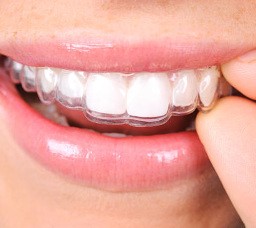
Overcrowded teeth are more difficult to keep clean, which can increase your risk of cavities and gum disease. Clear aligners can move your teeth into position to create a straight, healthy smile.
Gaps Between Teeth
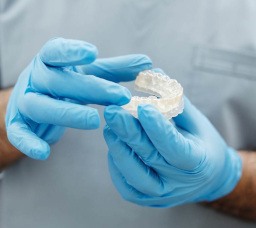
Invisalign can close gaps between teeth to ensure food residue and plaque don't accumulate in the spaces. You'll lessen your risk of gum disease while achieving a beautiful smile.
Overbite
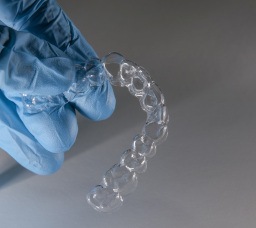
An overbite occurs when the upper jaw extends too far over the lower arch, which can make it difficult to bite and chew. Invisalign can fix overbites to ensure a balance between the upper and lower arches.
Underbite
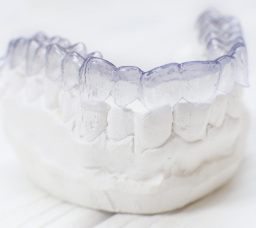
When the lower jaw protrudes forward over the upper teeth, it can affect jaw functions and dental health negatively. Clear aligners can fix the issue to ensure normal movements and better oral health.
Crossbite
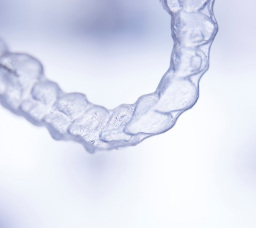
Poorly positioned teeth can cause the upper and lower teeth to cross arches when the mouth is closed. Invisalign will move teeth into alignment for an even bite.
Open Bite

An open bite occurs when the front teeth in the top and bottom arches don't meet when the mouth is closed. Clear aligners can bring the teeth together to close the bite.
Invisalign FAQs

Invisalign in Western Massachusetts is a preferred orthodontic treatment for teens and adults. It is supported by decades of success, but it's a big investment. Our dentists at Treehouse Orthodontics understand you might have a few concerns about clear aligners. They will explain everything during your consultation, and here are the answers to the most frequently asked questions about Invisalign.
What Does Invisalign Look Like?
Invisalign aligners are made of smooth transparent plastic. Although you can see the aligners when holding them in your hand, they are very difficult to detect when worn over your teeth. Your aligners can maintain a discrete appearance with the right care, like using non-abrasive dental products to prevent scratches and cleaning them regularly. Don't eat or drink anything except water when wearing your aligners to prevent stains. If you need any attachments or buttons, they won't be clear like your aligners, but they will be tooth-colored to blend in with your smile.
Does Invisalign Hurt?
No orthodontic treatment is pain free, but many patients report Invisalign to be more comfortable than metal braces. It's normal for your teeth to be tender when first beginning your treatment and when switching to new aligners. Invisalign works by applying continual pressure to specific teeth to move them gradually. Any tenderness is a sign your treatment is working. It will become less frequent as you progress through your series of aligners. You can manage it by taking an over-the-counter pain reliever and eating soft foods. Since no brackets or wires are used, you won't have to worry about any irritation or sores on the inside of your lips or cheeks.
How Long Does Invisalign Take?
The average treatment plan with Invisalign takes 12 months, but every situation differs. Many factors affect your timeline, like your age. Teens' teeth move quicker than adults because they are still growing and developing. The complexity of your case will also affect how long you'll need aligners. Your dentist in Western Massachusetts will explain how many aligners it will take to reach your goals. You can ensure there aren't any delays by wearing your aligners for 22 hours per day and switching to the next set in your series every 1-2 weeks as instructed by your orthodontist.
Can I Use My Dental Insurance for Invisalign?
Dental plans with orthodontic coverage can be used to offset the cost of Invisalign. Your dental insurance may cover your consultation and any preliminary procedures. After meeting your annual deductible, your benefits can pay a portion of the expense until reaching your yearly limit. A member of our team will work on your behalf with your dental insurance to maximize your benefits to lower your out-of-pocket expenses. They'll explain how your coverage is being used and your payment options for any remaining balance, like monthly payments with CareCredit.
What Foods Can I Eat with Invisalign?
There are many foods you can’t eat while wearing metal braces, like popcorn, but you don’t have to skip your favorite snacks when choosing Invisalign in Western Massachusetts. There aren’t any dietary restrictions; however, you must remove your aligners when having anything except water. Although your aligners will be made of durable plastic, wearing them while eating can damage them. Not to mention, they can lose their transparency from staining. Always take your aligners out before eating or drinking and place them in their storage case to avoid misplacing them. Brush and floss your teeth before putting your aligners back in your mouth. Don’t forget to clean your aligners, too.
Will Invisalign Change How I Talk?
Initially, your speech may sound a little slurred because your aligners will feel foreign in your mouth. However, practice makes perfect. As you get used to wearing your aligners, your speech clarity will improve, and you may soon forget they are in your mouth. Singing and reading aloud can give you the practice you need to shorten the transition period.
Can I Get Invisalign If I’ve Had Metal Braces Before?
Every situation differs, but Invisalign is often a great option for adults who have had metal braces previously. Your teeth can move a little over time, especially if you haven’t been wearing your retainer. Invisalign provides a discreet solution to move your teeth back into alignment. Your cosmetic dentist in Western Massachusetts will examine your mouth to determine if clear aligners are right for you.
Is Invisalign Cheaper Than Metal Braces?
Believe it or not, Invisalign and metal braces can cost about the same. Many factors influence the cost of both options, like the complexity of the tooth movements needed. Your dental insurance may also cover some of the expenses to lower your out-of-pocket responsibility. Our office offers various financial options to keep orthodontics affordable, like a monthly payment plan through a third-party financing company. You can’t put a price on the benefits you’ll enjoy when choosing the clear choice in orthodontics.
What Happens When I’m Done with Invisalign Treatment?
Once you finish your series of aligners, it’s time to ensure your results last. You’ll need to wear a retainer to hold your teeth in their new positions. This allows your bones and tissues to heal around them to prevent them from moving back. Initially, you may need to wear your retainer all the time until it’s only needed at night. We offer many subtle solutions, so you don’t have to worry about your retainer compromising your professional image.
Traditional Orthodontics Orthodontic Emergencies View Our Services
